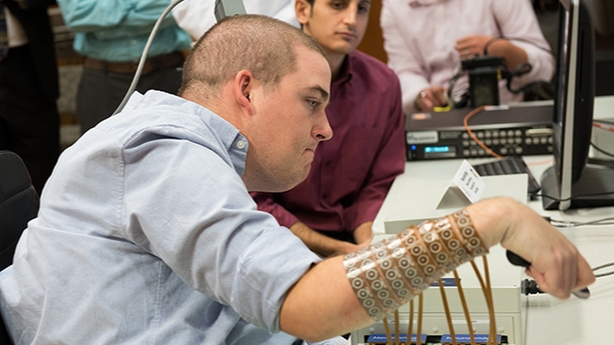2016 has been an incredible year in so many ways, not least in the area of scientific research.
It has been a year of many firsts, of steady progress in certain exciting areas and, of course, of failures.
In no particular order, here are some of the biggest stories from the course of the year that had many of you talking, and left us all thinking.
Proxima b
Extra-solar planets, or exoplanets, are being found all the time these days, thanks to big strides in ground and space-based instruments and ballooning knowledge.
But one discovery this year captured most attention – the identification of Proxima b.
It is orbiting Proxima Centauri, a low mass red dwarf situated a little over four lights years or 40 trillion kilometres from our solar system.
Sounds far away, but in actual fact this is the closest known exoplanet to our own. And what’s even more exciting is that the planet is situated in a zone where scientists say it may be feasible for water to exist on its surface, and by extension life. Start the car....let’s go!
SpaceX lands a rocket
If we are ever to get to an exoplanet, then the cost of space travel needs to come down considerably, parts need to become reusable and the technology has to improve.
SpaceX made a big stride forward this year when in April it landed a first stage Falcon-9 rocket on a drone ship after it had delivered a payload into orbit.
It wasn’t the first such landing, but it was the first at sea – an important and extraordinary development, given that many launches have to take place over water.
The next step is to see whether the rockets can be regularly used again.
Implants help quadriplegic man regain movement

There is much incredible work ongoing in the area of restoring function and movement to those with damaged or diseased limbs. In April, news emerged of the extraordinary case of Ian Burkhart.
He is a 24-year-old US man who was left quadriplegic following an accident. But now, thanks to a wearable sleeve that sends electrical impulses to his muscles, he is able to grasp objects, pour and stir drinks, and even play the Guitar Hero computer game.
Scientists developed a computer system that can read and decode Mr Burkhart's thoughts and translate them into signals tailored for different hand movements, by-passing his broken spinal cord.
Stem cells restore movement to stoke victims
But it isn’t just mechanics and technology that are helping people to regain motor skills again.
In June, scientists at Stanford University revealed that stroke victims who thought they were going to be confined to a wheelchair or be paralysed for the remainder of their lives, were able to walk again after stem cells were injected into the part of their brain which had been damaged.
What was really interesting though was that the patients had their strokes between six months and three years earlier, even though it had previously been thought the brain couldn’t recover beyond six months after incurring damage.
The first three-person baby is born
The concept of creating a human embryo from the DNA of more than one parent had been controversial science fiction for some time.
But in September, it was announced that the first three person baby had been born in Mexico. The boy was conceived using a technique which involves a small amount of DNA from a third parent being added to the genetic material of the father and mother.
The technique is designed to avoid parents with rare genetic mutations from passing them onto their children.
Last year, the UK became the first country in the world to legalise the practice, and the UK regulator recently gave the go-ahead for the treatment to begin there.
Confirmation that gravitational waves exist
In February it emerged that Einstein was indeed correct. Gravitational waves, or ripples in space time, were detected by the LIGO Scientific Collaboration in the US which had verified the measurements with two instruments in Louisiana and Washington.
The discovery ended a long quest, which began a century ago when Albert Einstein first theorised their existence.
The waves were found to be coming from two black holes that orbited one another, spiralled inward and smashed together.
A climate of change
Following the euphoria around the successful agreement of a global accord at the UN climate conference in Paris at the end of last year, 2016 quickly delivered sobering news.
After a record breaking 2015, the first six months of this year continued the trend, with subsequently monthly figures indicating that 2016 will be hotter again.
Against this worrying backdrop, scientists continued their efforts to find ways to mitigate against further temperature increases.
One of the most interesting discoveries came from a pilot project in Iceland, which found that carbon dioxide pumped back into hot basalt rocks underground not only stays there, but can also turn into rock.
The breakthrough brings the prospect of sustainable carbon capture closer.
New ninth planet?
For years we were taught that there were nine planets in our solar system.
But then in 2006 came the tragic news that Pluto did not in fact make the cut because it was too small, leading to it being designated a dwarf planet.
However, those who find it hard to get thoughts of a nine planet solar system out of their heads got a boost in January, when research from scientists in the US claimed a previously unknown giant planet may have been discovered lurking in the outer reaches of our solar system.
Nicknamed Planet Nine, the suspected object has a mass about 10 times that of Earth and follows a strange highly elongated orbit in the distant solar system. All they have to do now is find it.
Google Go-es forward in artificial intelligence development

Artificial intelligence (AI) is the big buzzword at the moment, and every day we are hearing about new applications, from intelligent digital personal assistants through to computer gaming and medical diagnostics.
However, there was great excitement in the first quarter of the year when Google revealed that its Deepmind AI software AlphaGo had beaten the world’s best players of Go, a board game that has long been considered a huge challenge for AI developers.
Not only did AlphaGo beat South Korean grandmaster Lee Sedol, it trounced him, earning it the highest Grandmaster rank in the process.
Monkey head transplant
This is certainly one of the most bizarre stories of the year, but also among the most intriguing. Italian surgeon Sergio Canavero has for over a year now been talking about his plans to attempt the first human head transplant.
But in January he claimed he had already carried out the operation on animals with varying degrees of success.
Videos showed mice moving around weeks after having their spinal cord cut and refused, it was claimed. He also alleged that researchers in China had successfully carried out a head transplant on a monkey, although they didn’t reconnect the spinal cord.
Canavero plans to carry out the first human head transplant on a 31-year-old Russian man suffering from Werdnig-Hoffman disease in 2017.
If it happens and if he is successful, we will without doubt be talking about this topic this time next year.
Comments welcome via Twitter to @willgoodbody







